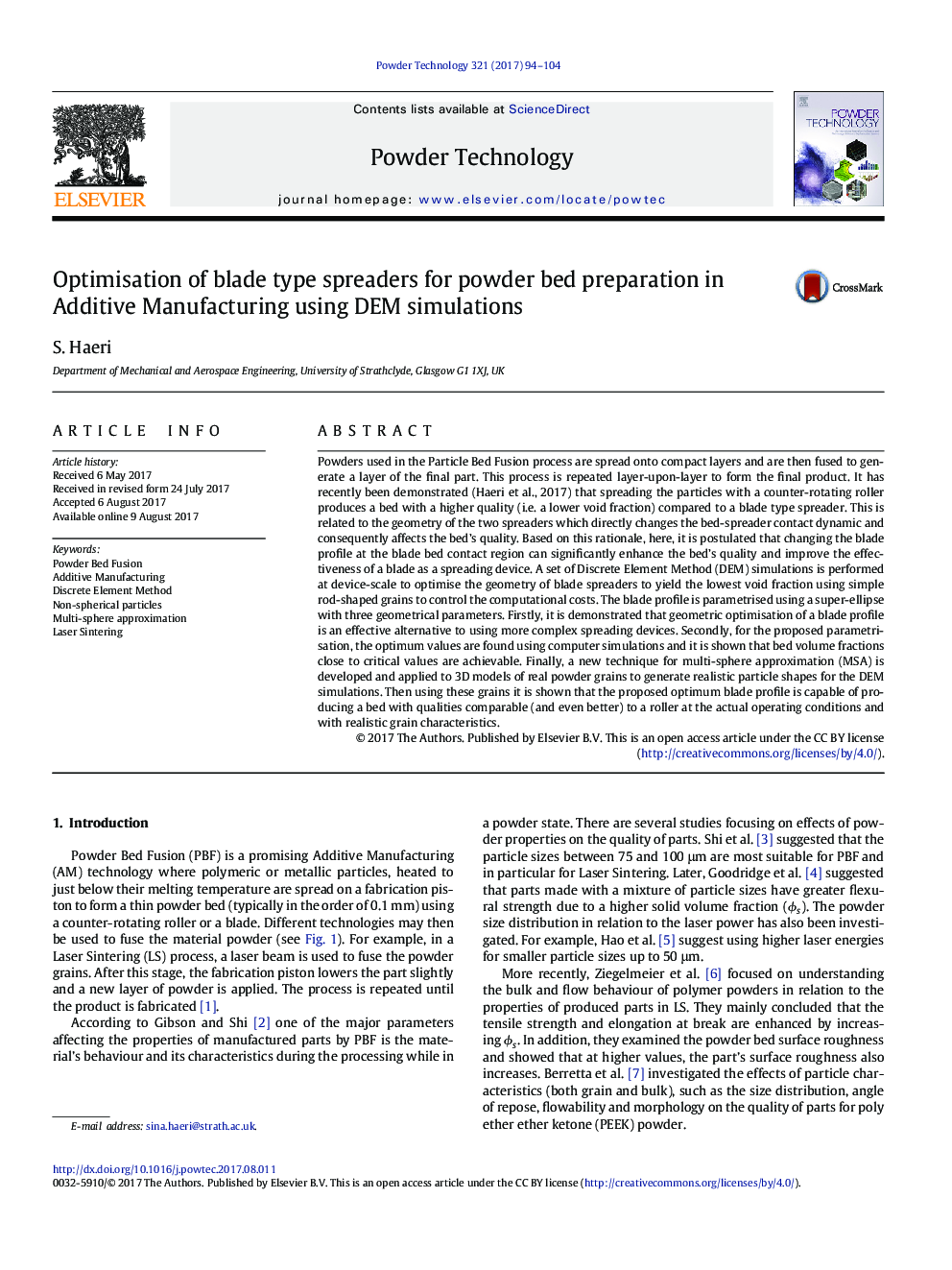| کد مقاله | کد نشریه | سال انتشار | مقاله انگلیسی | نسخه تمام متن |
|---|---|---|---|---|
| 4914792 | 1427720 | 2017 | 11 صفحه PDF | دانلود رایگان |

- Developed optimised spreaders for powder bed preparation in Additive Manufacturing.
- Demonstrated that the new design outperforms currently available technologies.
- The new design can lead to higher production rates and lower maintenance costs.
- Development of a versatile automatic multi-sphere approximation algorithm for DEM
Powders used in the Particle Bed Fusion process are spread onto compact layers and are then fused to generate a layer of the final part. This process is repeated layer-upon-layer to form the final product. It has recently been demonstrated (Haeri et al., 2017) that spreading the particles with a counter-rotating roller produces a bed with a higher quality (i.e. a lower void fraction) compared to a blade type spreader. This is related to the geometry of the two spreaders which directly changes the bed-spreader contact dynamic and consequently affects the bed's quality. Based on this rationale, here, it is postulated that changing the blade profile at the blade bed contact region can significantly enhance the bed's quality and improve the effectiveness of a blade as a spreading device. A set of Discrete Element Method (DEM) simulations is performed at device-scale to optimise the geometry of blade spreaders to yield the lowest void fraction using simple rod-shaped grains to control the computational costs. The blade profile is parametrised using a super-ellipse with three geometrical parameters. Firstly, it is demonstrated that geometric optimisation of a blade profile is an effective alternative to using more complex spreading devices. Secondly, for the proposed parametrisation, the optimum values are found using computer simulations and it is shown that bed volume fractions close to critical values are achievable. Finally, a new technique for multi-sphere approximation (MSA) is developed and applied to 3D models of real powder grains to generate realistic particle shapes for the DEM simulations. Then using these grains it is shown that the proposed optimum blade profile is capable of producing a bed with qualities comparable (and even better) to a roller at the actual operating conditions and with realistic grain characteristics.
Graphical Abstract204
Journal: Powder Technology - Volume 321, November 2017, Pages 94-104